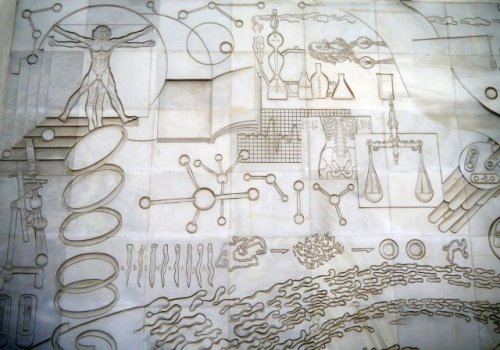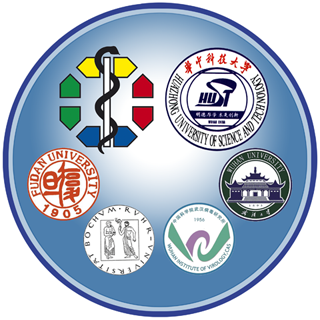Project Part B

Project Part B: Adaptive Immune response, immune
escape and immune modulation
目标 B: 适应性免疫应答,免疫逃逸和免疫调控
Project B1:
Mechanisms of HCV evolution - Impact of HCV sequence diversity on the immune response
HCV进化机制-HCV基因序列多样性对免疫应答的影响
Prof. Dr. Jörg Timm, Institute for Virology, Essen
Prof. Dr. Daniel Hoffmann, Centre for Medical Biotechnology, Essen
Analysis of Hepatitis C Virus (HCV) evolution can aid vaccine development by identification of regions under selection pressure by the immune system. In project B1 the influence of host genotypes on viral evolution will be analyzed for different genes that shape the immune response, and the impact of differential population allele frequencies in China versus Germany will be addressed. The earliest events of HCV transmission and evolution will be dissected by characterization of viral evolution during liver transplantation. Taken together, these studies will help to elucidate the determinants of HCV evolution and the impact of HCV sequence diversity on the immune response.
Project B2 (ended):
Modulation of T cell function in chronic hepatitis B virus infection - pre-clinical studies in the woodchuck model
Prof. Dr. Michael Roggendorf, Institute for Virology, Essen
Project B3:
Viral and immunological determinants of the progession to chronicity in hepadnaviral infection
嗜肝病毒感染慢性化进程中的病毒和免疫学因素的研究
Prof. Dr. Dongliang Yang, Prof. Dr. Baoju Wang,
Union Hospital of Tongji Medical College, Wuhan
杨东亮教授, 王宝菊副教授,华中科技大学同济医学院附属协和医院感染病学教研室
HBV specific T cell mediated immune response plays an important role in HBV clearance. However, many key points in HBV infection remain to be resolved, including the innate immune response during the early phase, the interaction between viral replication and the immune response, and the role of HBV specific regulatory T cells (Treg). To this end, we will use the newly established Chinese woodchuck model to analyze: 1) the genetic background of Chinese woodchuck with different outcome of WHV infection; 2) the innate and adaptive immune response in the animals with the different level of WHV replication. In addition, we will use HBV hydrodynamic injection mouse model to analyze HBV specific Treg and CTLs in mice with HBV persistence and those with temporary Treg depletion.
Project B4:
Virus-induced regulatory T cells in retroviral infection: new targets for immunotherapy of chronic infectious diseases
病毒诱导的调节性T细胞:慢性病毒感染性疾病免疫治疗的新靶点
Prof. Dr. Ulf Dittmer, Dr. Wibke Bayer - Institute for Virology Essen
Prof. Dr. Matthias Gunzer, Institute for Experimental Immunology and Imaging, Essen
We previously showed that T cell responses are suppressed by regulatory T cells (Tregs) during the chronic infection of mice with the Friend retrovirus (FV). We utilize the FV model to study the interaction of Tregs and effector CD4+ and CD8+ T cells during chronic retroviral infection. The current project focuses on three major topics: 1. Define the molecular mechanisms of Treg expansion after infection. 2. Visualize the expansion of Tregs and characterize their interaction with effector T cells in vivo. 3. Combine depletion of Tregs with therapeutic vaccination to achieve complete elimination of chronic FV. The goal is to develop new therapies against chronic retroviral infections.
Project B5:
PRRs (TLR2 and -13 ligands) modulate specific T cell responses to hepatitis B virus (HBV) and sense HBV infection
TLR2配体作为免疫调节剂在慢性乙型肝炎治疗中的应用:对CD8+ T 细胞表型和功能的调节
Prof. Dr. Mengji Lu, Institute for Virology, Essen
Prof. Dr. Carsten Kirschning, Institute for Medical Microbiology, Essen
We previously showed that Toll-like receptor (TLR) 2 activation contributes to the control of hepadnaviral infection in cell culture and animal models. TLR2 mediates MAP kinase activation to suppress hepadnaviral replication and enhances specific CD8+T cell responses. However, monotherapy with TLR2 ligand did not effectively suppress viral replication in chronic carrier woochucks. In the present project, we will combine antivirals and specific vaccines with ligands of TLR2/13 to achieve viral clearance in animal models. Additionally, we will elucidate the mechanisms of HBV TLR sensing to discover new TLR ligands for therapy of HBV infection.
Project B6:
Immunogenicity of recombinant interclade HIV isolates from China and genetically engineered HIV gp120 V1/V2 glycosylation variants
中国重组型HIV毒株的免疫原性及膜蛋白gp120糖基位点的变异进化
Prof. Dr. Rongge Yang, Prof. Dr. Binlian Sun, Institute for Virology, Wuhan
杨荣阁教授, 孙宾莲副研究员, 中国科学院武汉病毒研究所
The glycosylation of the HIV-1 envelope protein gp120 plays a key role on the induction of HIV-neutralizing antibodies and viral replication. We previously investigated the sequence features in the gp120 of B’ and CRF01-AE subtype. We found that there are some specific mutants on and around the glycosylation sites. We will establish a series of point-mutants to investigate the function of these points on viral replication and the neutralization sensitivity by using the membrane fusion inhibitors and sCD4. Our aim is to gain knowledge which is vital for HIV vaccine development.
Project B8N:
The role of inhibitory receptors and their ligands in CTL immune escape and the establishment of chronic virus infection
抑制性受体及其配体在CTL免疫逃逸及病毒持续感染中的作用
Dr. Gennadiy Zelinskyy, Institute for Virology, Essen
CD8+ T cells are critical for the control of most virus infections but they are not able to completely eliminate the virus in chronic infections. We will use the Friend retrovirus mouse model for kinetic analyses of ligands for inhibitory receptors, which are known to be responsible for CD8+ T cell exhaustion. We will also define the role of these ligands for the development of dysfunction of virus-specific effector CD8+ T cells during late phase of acute antiviral responses and develop therapeutic strategy for prevention of CD8+ T cell dysfunction.
funded since October 2015:
Project B9:
Cytolytic CD4 t cell-mediated viral selection pressure: Defining potential strategies for therapeutic and prophylactic HIV vaccines
Prof. Dr. Hendrik Streeck, Institute for Medical Biology, Essen
The role of CD4 T cells in the control of chronic viral infections is well established. Besides helper functions for CD8 T cells and B cells, non-traditional CD4 T cell functions have been implicated to significantly contribute to the control of viral infections including influenza, HBV and HIV. In this grant proposal we plan to determine 1.) the mechanisms involved in the induction of CD4 T cell-mediated cytotoxicity, 2.) the properties of the synapse formation and cytolytic pathways of CD4 T cells as well as the influence of inhibitory receptors on the synapse formation and 3.) we will reveal genetic regions of cytolytic CD4 T cell immune selection in the virus sequence and the consequence of these mutations on viral fitness. Overall, this grant proposal is designed to determine the mechanisms of cytolytic induction and function of CD4 T cells and their contribution to viral evolution and selection pressure in chronic HIV infection.


